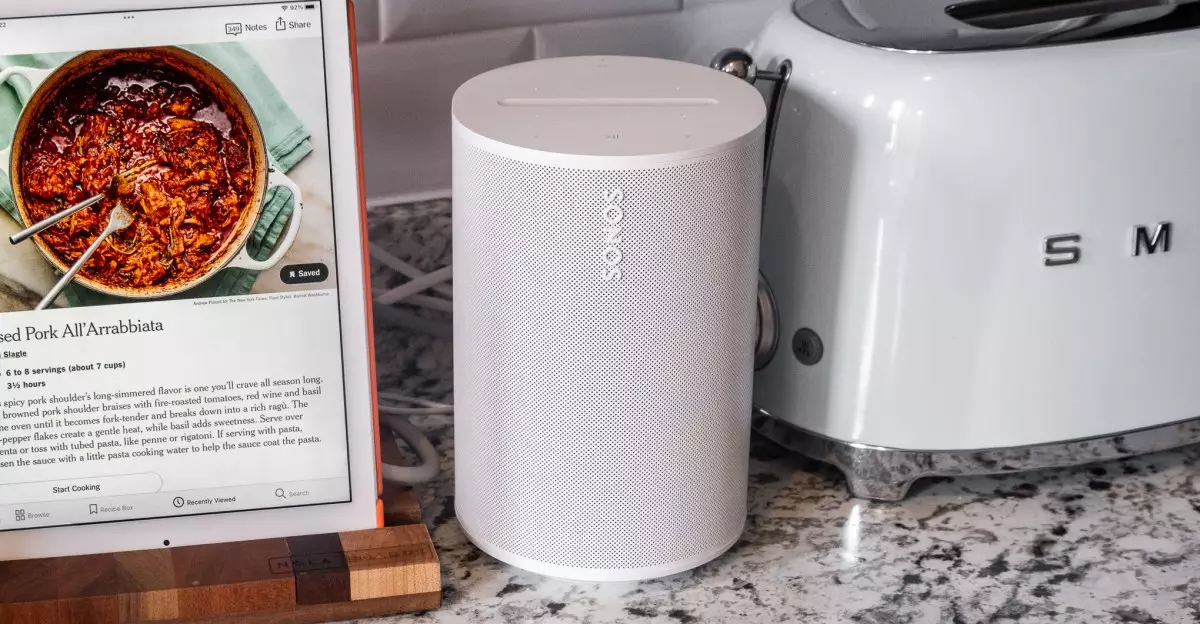In a move that reflects both market realities and customer needs, Sonos has slashed the prices of two of its noteworthy audio devices—the Era 100 smart speaker and the Ray soundbar. Now both available for $199, these products signify a strategic shift for Sonos, which has faced challenges in hardware sales as consumer preferences evolve. The Era 100, once priced at $249, saw a $50 reduction, while the Ray represents an even heftier cut of $80 from its original $279 tag. This decision is not just a fleeting sale; it’s a permanent price adjustment designed to make superior sound more accessible.
Sonos is exerting pressure in a competitive market that has left many audio companies grappling for sustainability. To effectively regain market share, it’s essential for a brand like Sonos to not only produce quality hardware but also align product pricing with what consumers are willing to pay in today’s value-conscious landscape.
What Enhanced Features Can Customers Expect?
The Era 100 epitomizes an upgrade to the widely respected Sonos One, incorporating improvements that elevate the user experience significantly. Enhanced stereo sound, line-in capabilities, and Bluetooth support cater to the audio enthusiast seeking versatility. With intuitive controls, the Era 100 becomes more than just a speaker; it’s an entry point into the expansive Sonos ecosystem, rendering it highly recommendable at this new price point.
On the other hand, the Ray soundbar has its merits and limitations. While it offers a commendable audio solution for smaller spaces or secondary screens, the absence of HDMI connectivity and Dolby Atmos means it won’t appeal to those looking for a fully immersive cinematic experience. While the Ray’s performance may exceed that of typical TV speakers, it does not match the higher-end capabilities of models like the Arc Ultra or Beam (Gen 2), which bring richer, multi-dimensional sound to the table.
The App and the Future of Sonos
Sonos’ challenges extend beyond hardware. Following issues that marred its mobile app’s reliability last year, the company has been working diligently to rectify these shortcomings. Regular software updates and an open Trello board for tracking new features and fixes suggest a company earnest about customer satisfaction and technological improvement. This approach seeks to reassure users that every audio experience is reliable and seamless, a crucial aspect in retaining customer loyalty.
The abrupt cancellation of a planned streaming video player also indicates a strategic pivot. By prioritizing core audio products and fine-tuning the customer experience, Sonos is taking a step back to ensure that the fundamentals are in order before diving into new ventures. This introspective approach could provide the bedrock necessary for future innovations, solidifying Sonos’ place in both home audio and beyond.
In this era of digital transformation, where every product must earn its place in a consumer’s home, Sonos’ timely price adjustments demonstrate a proactive strategy in fostering brand loyalty and countering competitors. As audio continues to evolve, Sonos seeks to redefine its role not only as a hardware provider but as a facilitator of experiences that resonate deeply with users.

